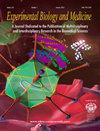Assessments of tumor mutational burden estimation by targeted panel sequencing: A comprehensive simulation analysis
IF 2.8
4区 医学
Q2 MEDICINE, RESEARCH & EXPERIMENTAL
引用次数: 0
Abstract
Tumor mutational burden (TMB), when at a high level, is an emerging indicative factor of sensitivity to immune checkpoint inhibitors. Previous studies have shown that the more affordable and accurate targeted panels can be used to measure TMB as a substitute for whole exome sequencing (WES). However, additional processes, such as hotspot mutations exclusion and TMB adjustment, are usually required to deal with the effect of the limited panel sizes. A comprehensive investigation of the effective factors is needed for accurate TMB estimation by targeted panels. In this study, we quantitatively evaluated the variances of TMB values calculated by WES and targeted panels using 10,000 simulated targeted panels with panel sizes ranging from 0.2 to 3.1 million bases. With The Cancer Genome Atlas (TCGA) cancer samples and mutation profiles, we fixed regressions on WES-TMBs and panel-TMBs to assess the performance of a given targeted panel. Panel size was found as one of the major effective factors of TMB estimation. Meanwhile, by investigating the well-performing small panels that reported TMB values similar to those of WES, we demonstrated the evidence of the cancer type–specific impacts of genes on TMB estimation and identified high-impact gene sets for different cancer types based on the TCGA data. This study revealed the quantitative correlations between TMB variance and panel size, and the potential impacts of individual genes on TMB estimation. Our results suggested that for cancer patients diagnosed using targeted panels, it would be highly beneficial to have the capability to directly measure TMB from the targeted sequencing data. This would greatly assist in making decisions regarding the use of immunotherapies.通过靶向面板测序评估肿瘤突变负荷:综合模拟分析
肿瘤突变负荷(Tumor mutational burden, TMB),当处于高水平时,是对免疫检查点抑制剂敏感性的一个新兴指示性因素。先前的研究表明,更实惠和准确的靶向面板可用于测量TMB,作为全外显子组测序(WES)的替代品。然而,通常需要额外的过程,如热点突变排除和TMB调整,以处理有限的面板尺寸的影响。为了准确估算目标面板的TMB,需要对有效因素进行全面的研究。在这项研究中,我们使用10,000个模拟目标面板,面板尺寸从20到310万个碱基不等,定量评估了WES和目标面板计算的TMB值的差异。利用癌症基因组图谱(TCGA)癌症样本和突变谱,我们对WES-TMBs和panel- tmbs进行了固定回归,以评估给定目标面板的性能。研究发现,面板大小是TMB估算的主要影响因素之一。同时,通过调查报告TMB值与WES相似的表现良好的小型小组,我们展示了基因对TMB估计的癌症类型特异性影响的证据,并根据TCGA数据确定了不同癌症类型的高影响基因集。本研究揭示了TMB方差与面板大小之间的定量相关性,以及个体基因对TMB估计的潜在影响。我们的结果表明,对于使用靶向小组诊断的癌症患者,能够从靶向测序数据中直接测量TMB将是非常有益的。这将极大地有助于作出有关使用免疫疗法的决定。
本文章由计算机程序翻译,如有差异,请以英文原文为准。
求助全文
约1分钟内获得全文
求助全文
来源期刊

Experimental Biology and Medicine
医学-医学:研究与实验
CiteScore
6.00
自引率
0.00%
发文量
157
审稿时长
1 months
期刊介绍:
Experimental Biology and Medicine (EBM) is a global, peer-reviewed journal dedicated to the publication of multidisciplinary and interdisciplinary research in the biomedical sciences. EBM provides both research and review articles as well as meeting symposia and brief communications. Articles in EBM represent cutting edge research at the overlapping junctions of the biological, physical and engineering sciences that impact upon the health and welfare of the world''s population.
Topics covered in EBM include: Anatomy/Pathology; Biochemistry and Molecular Biology; Bioimaging; Biomedical Engineering; Bionanoscience; Cell and Developmental Biology; Endocrinology and Nutrition; Environmental Health/Biomarkers/Precision Medicine; Genomics, Proteomics, and Bioinformatics; Immunology/Microbiology/Virology; Mechanisms of Aging; Neuroscience; Pharmacology and Toxicology; Physiology; Stem Cell Biology; Structural Biology; Systems Biology and Microphysiological Systems; and Translational Research.
 求助内容:
求助内容: 应助结果提醒方式:
应助结果提醒方式:


